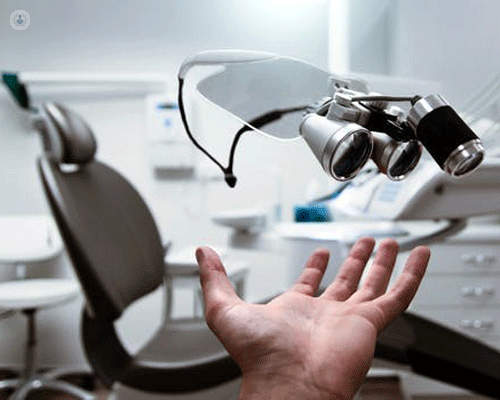

What is OCT (optical coherence tomography)?
An optical coherence tomography (OCT) scan is an imaging test that uses low coherence light beams analyse different sections of the human body, obtaining highly precise and reliable pictures of several levels of tissue. This scan is primarily used in ophthalmology (to study the cornea and retina) and cardiology (to assess the state of the blood vessels where there may be a potential narrowing, which could lead to more severe complications).

What does OCT involve?
An OCT is similar to an ultrasound, however, light waves are used instead of ultrasound waves. For ophthalmology purposes, this procedure is minimally-invasive, and it uses the infra-red laser rays to analyse the retina and cornea, generating precise and high definition pictures. Thanks to the possibility of analysing each tissue section, this exam can identify several conditions, especially those of the macula and of the optic disk. The test takes just a few minutes, during which the specialist will use certain reference points on the optic disk to receive and store the laser beams. The result is an image of all the strata of the retina, allowing the specialist to determine if there are any abnormalities, from which they can formulate a diagnosis.
For cardiology purposes, this procedure is more invasive, as the light waves are sent from a catheter to the area of interest. That means that the catheter has to physically reach the test area by making an incision. Once the light waves emitted by the transducer hit the clot and bounce back, they produce photon fluctuations which are sent back and received by an interferometer, allowing for an assessment of the problem.
What is OCT for?
In ophthalmology, OCT is used to diagnose and assess the advancement and stage of retinal conditions such as maculopathies, glaucoma, hereditary retinal dystrophies, vitreoretinal diseases and macular oedemas.
In cardiology, OCT is used to determine whether there are thromboses, plaque, and calcium build-up or if a stent was placed incorrectly (especially when trying to prevent atherosclerosis).
How can I prepare for OCT?
When doing an eye OCT there is no need for any kind of preparations. You won’t need to use eye drops as the machine won’t physically touch your eyes. However, you won’t be allowed to wear contact lenses during the exam. On the other hand, when doing a heart OCT, you will be under local anaesthetic (the catheter will need to reach the area to be analysed). Therefore, you should not take anticoagulants, to avoid potential complications during or after the procedure.
What does it feel like during the procedure?
It is not painful during an OCT scan. During an eye examination, you’ll have to stay still and look at the light from the equipment, whereas during a heart scan you will be under local anaesthetics which will avoid any pain.
